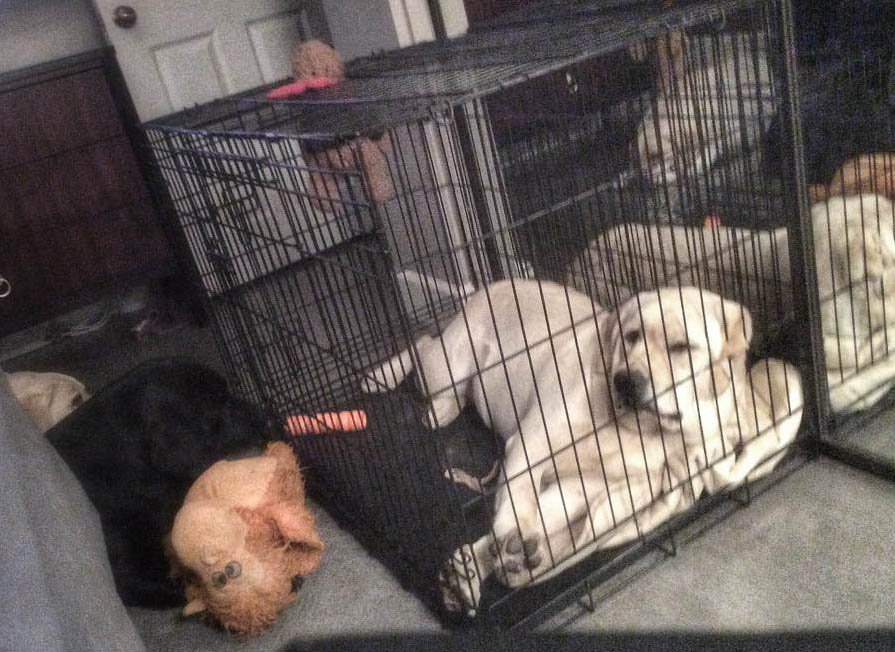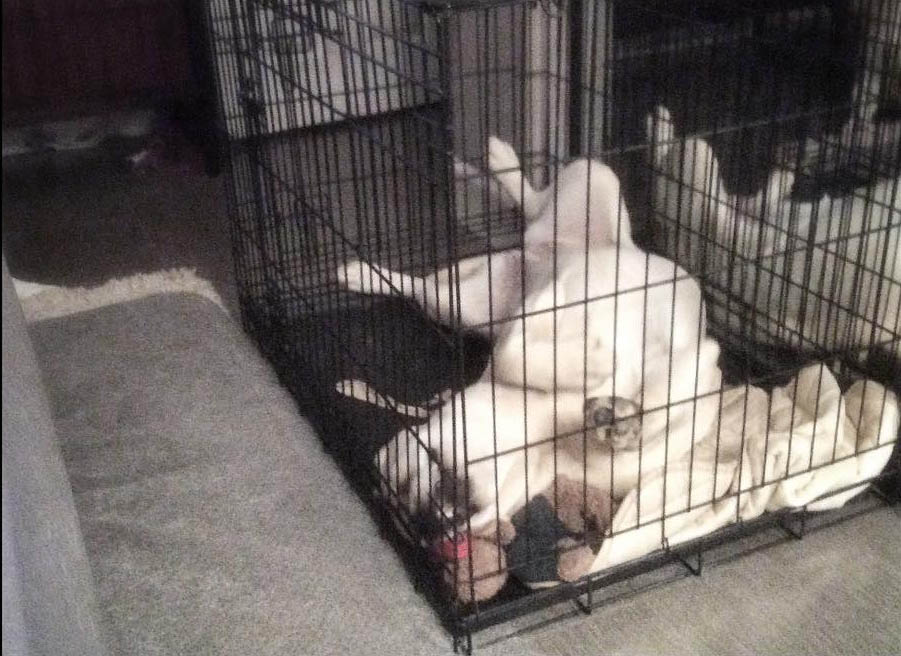Crate Training Your Puppy

A crate is a portable “kennel” that is used as an aid to train a young puppy or safely transport your dog in a plane or car. It can also be used as a “home” for your dog when you travel, making your dog a welcome visitor in a friend’s home or motel.
The major use of the crate is to prevent the dog from doing something wrong. House manners are just as important as house breaking. It is useless to correct a dog for something that it did 5 minutes ago; you must catch them in the act. If the dog is out of the crate unsupervised, it may do something wrong and not be corrected, or worse, corrected after the fact. If the dog is not corrected, it may develop problem behavior as a habit or learn that it can get “away with it” when it is not supervised.
The dog will not associate a correction with a behavior unless given at the time of the misbehavior. Corrections after the fact will only confuse the dog and lead to a lack of trust from your dog. If you find evidence of a misdeed after the fact, understand it is your fault, not the dog’s. If you use your crate as you would a child’s playpen, to keep the puppy safe when you cannot watch it closely, the results will be amazing.
- Do buy the Series 400 made by “Vari Kennel” this is the correct size crate for your Labrador!
- Do remove all collars before putting the dog in the crate.
- Do place the crate in a people area.
- Do let the dog out often so that it is never forced to soil its crate.
- Do take the dog out if it whines or barks because it needs to eliminate.
- If they were just out and eliminated, correct it for whining or barking.
- Do clean the crate regularly, especially if you have added a floor.
- Do adjust your schedule so they get out every 4 hours during the day.
- When you are home and can supervise them, they should not be in the crate (except at night when you are sleeping).
- Do put safe toys and bedding in the crate. Most dogs will destroy foam bedding and need only a soft rug or a pegboard, cut to fit the crate, to sleep on.
- Do let the dog out of the crate to potty after eating or drinking a lot. (The dog will have to eliminate.)
- Don’t EVER leave a collar on the dog while in the crate – they can accidentally strangle.
- Don’t punish the dog if it soils the crate. Sitting with “it” is punishment enough.
- Don’t use the crate as punishment.
- Do not abuse the crate, and leave your dog in it for extended periods of time.
- Don’t rush to give the dog to much freedom out of the crate unsupervised.
- Start with very short periods and work your way up to longer periods.
- Don’t give your crate away. Keep the crate handy even for older dogs; they are great for special situations that require the dog to be confined.
- Buying a crate for your puppy will be the best one of the best investments you ever make! :- )

